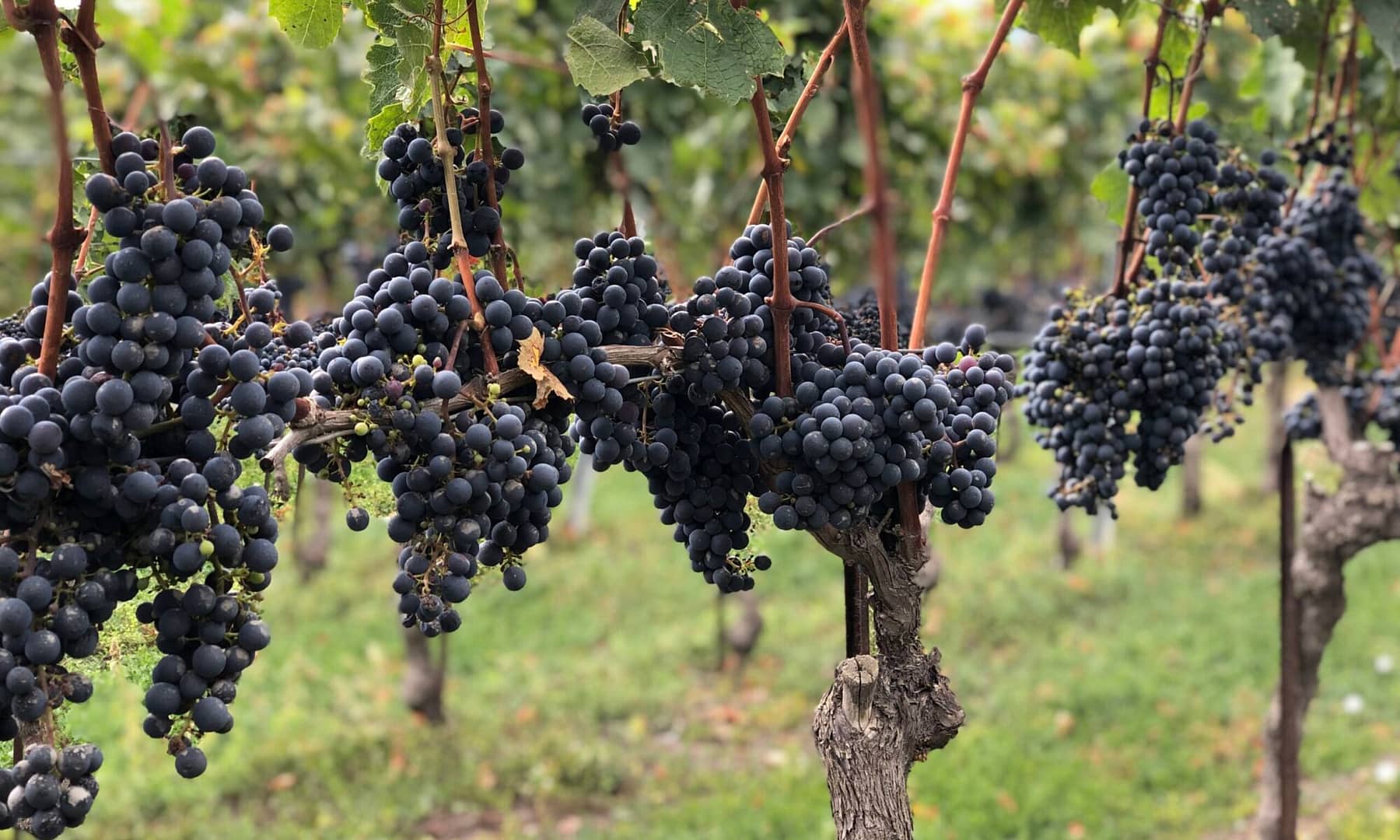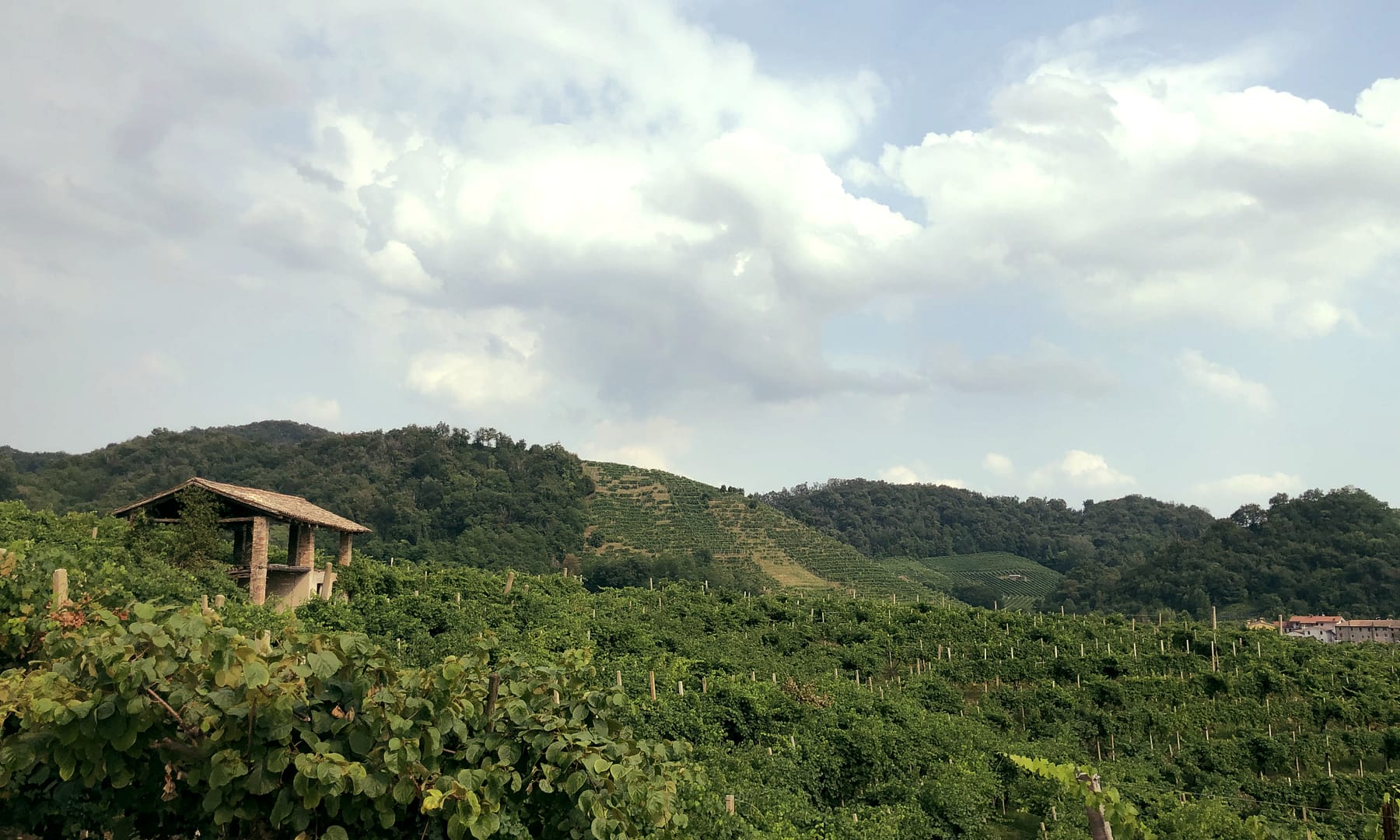In a period in which Prosecco sales are soaring and their volume surpasses the one of Champagne, the world turn their eyes to Valdobbiadene. The heart of Prosecco production.
Crowning the pyramid of the Prosecco hierarchy we find Cartizze.
Cartizze, the Prosecco Grand Cru?
Cartizze is a hilly area of about 107 hectares, just outside Valdobbiadene. The microclimate in this valley creates a special condition that helps creating this particular style of Prosecco.
The hills face south, keeping the vines exposed to the sun for the whole day without having one vine casting shadow over another. This leads to better maturation and higher sugar levels than in any other Prosecco production area.
The valley also creates a sort of air tunnel, keeping the vines ventilated. This constant air flow facilitates adoption of sustainable practices, since the climate helps keeping fungal diseases away.
The soil is also a key feature in this production area. The mix of sand and layers of clay facilitate drainage, while keeping the right amount of moist on the roots. The grapes don’t “suffer” as much as in other neighboring areas, which is often desired, but evolve to healthy fruits.
The combination of these aspects gives the Prosecco from Cartizze differentiated levels of complexity, depth and elegance.
The Winemaker
On a recent trip to the region I connected with Pietro De Conti, from Pdc (similarity between the acronym for his name and the vineyard label is not a coincidence).
After travelling the world and spending a fair time in Australia, Pietro came back to his origins in the family business. His vision is to evolve the expression of glera (key grape in the production of Prosecco), specialize in Cartizze only and narrow the gap between the producer and the final consumer.
A firm believer in the concept of the terroir in the region (a good place to be if we are talking about Cartizze) Pdc has 100% glera in their Prosecco. Technically, the DOCG demands a minimum of 85% of glera in Prosecco. The remaining 15% is generally a blend with Pinot Grigio, Chardonnay and Pinot Bianco, among others.
The harvest here begins ahead of time compared to most grapes. For sparkling wine production, the required levels of acidity are pretty high, which leads to picking the grapes at early ripening stages. All the grapes are hand-picked and the 10 people team completes the harvest in just a bit over 4 hours. The work starts really early in the morning in order to prevent the fermentation from kicking off ahead of time under the sun. The short distances to be covered allow the grapes to leave the vines and reach the pressing in less than an hour.
By the figures above you can imagine already that the production is not that large. They top 10 thousand bottles a year only, between their Brut and the Dry styles.

Challenges of going Organic in Cartizze
While Valdobbiadene has gained media spotlights with their soaring production, there is a shadow lingering over this success. It’s been years since several parties have been calling attention to the heavy use of synthetic pesticides in the region.
It’s a tough change to make when the soil has got already addicted to the long-term use of such chemicals.
Europe has been looking for a role model to follow on how to transition to more sustainable practices, and it seems they are slowly rising.
Bordeaux saw several cases of soil deterioration and intoxication of workers in the vineyards. After a lot of pressure from entities and good will from associations, actions came into play. At the core of the right bank, Saint-Émilion passed a measurement mandating sustainable farming in the region, starting with the 2019 vintage. That will impact nearly 1000 wine growers alone.
While a mandate doesn’t come in other regions, organic practices depend on patience and risk tolerance of a few producers.Pdc is part of this selected few. Pietro believes in the natural health of the soil for the plants to shine. Starting with the 2019 vintage, Pdc will have the organic certification stamped on their wine labels.
That is an epic achievement, considering the efforts to remain organic in the region. Cooperation with neighboring producers is needed so that your own vines are not contaminated by their spraying. Another producer in Valdobbiadene explained to me that despite adopting organic practices, up to 20% of his production cannot be eligible to be bottled as organic. The vines on his property that are too close to his neighbors, that are non-organic producers, often get contaminated. Often happens that the concentration of chemicals on these vines go over the maximum levels allowed to comply as organic.
Pdc wines
Pietro brought home ideas on customer care learned abroad. You clearly notice a differentiated approach at the modern tasting room, personalized tasting materials, communication with final consumers and the full use of digital content in their premises.
PdC is also trying to provide orientation to visitors in the region. Extending the experience from the vineyard to restaurant recommendations, cultural activities and a bit of history from the area.
Their 100% glera sparkling wines come in two styles: Cartizze Brut and Dry.
Both with beautiful and persistent perlage, the range of aromas is wide enough to be entertaining but straight enough to keep it fun and not too serious. Summery opening with acacia flowers, white peaches, pear, grapefruit and some minor herbal notes with sage and thyme. Long finish with lemon zest, bitter almonds and a bit of wet slate adding minerality to the palate.
Something close to my heart is the view of having the wine as an experience. The more ingrained the story gets into the wine, more meaning you see on each sip.



